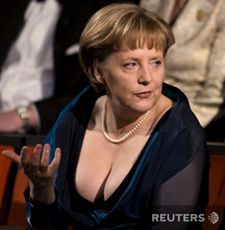Hopeful signs for women: Our fifth annual ranking showcases women who have beat out men for top posts this year, including Lynn Laverty Elsenhans (No. 39), the new chief of Sunoco; Gail Kelly (No. 11), who heads Australian bank Westpac; and Jane Mendillo (No. 42), who was just named to run the $35 billion Harvard University endowment.
In total, the women ranked on this list control $26 trillion worldwide.
The tenuous state of the world economy, however, has many of the world`s most powerful women in the same precarious positions as their male peers. Economic woes this year have already claimed the jobs of Patricia Russo, who headed the troubled Alcatel Lucent, and Zoe Cruz, former president of Morgan Stanley. Other highly placed women could be in jeopardy as well.
But while individual female leaders continue to climb higher, women as a group are making only modest gains. Women have hovered for a decade around 46% of the American labor force, but they hold only 15% of top corporate jobs; less than 3% of the country`s biggest companies have female chief executives, according to research nonprofit Catalyst.
 |
At No. 3, Indra Nooyi of PepsiCo is the highest-ranked woman in business as she expands the food and beverage giant internationally to counter a decline in Americans` preference for soda and chips.
Angela Braly (No. 4), the head of big health insurer WellPoint, suffered a setback this spring when her downward revision of financial forecasts caused a stock tumble, sparking investor and employee ire.
At No. 5, Cynthia Carroll is leading mining giant Anglo-American to riches in the commodities boom. Kraft chief Irene Rosenfeld (No. 6), is slowly turning around the mac `n cheese maker in her second year on the job, scoring a big hit in China with a new Oreo.
In the last few months of her tenure, U.S. Secretary of State Condoleezza Rice (No. 7) faces a myriad of diplomatic flare-ups: an unstable Pakistan, a bellicose Russia and the long-smoldering Middle East peace question. Ho Ching (No. 8), the head of Singaporean sovereign wealth fund Temasek, has been moving more of the city-state`s money abroad and now owns 15% of Merrill Lynch.
In France, Areva head Anne Lauvergeon (No. 9) has been dealing with public fallout from this summer`s leaks at two nuclear plants, even as France has announced plans to build more. Anne Mulcahy (No. 10) has doubled her research and development budget to focus on color printing and eco-friendly technologies.
These women top a far-flung list that comprises 54 businesswomen and 23 politicians, with the rest being media execs and personalities and nonprofit leaders. A third are newcomers to the rankings; this reflects not only new top positions for women, such as Starcom MediaVest`s Laura Desmond (No. 55) and Enterprise`s Pamela Nicholson (No. 93), but also the increasingly global reach of this list, with more women from outside the U.S. rising to worldwide prominence.
Prime Minister of Ukraine Yulia Tymoshenko occupies the 17th position in the Top-100 list of Forbes.
Just under half the women ranked this year are based outside of the U.S. Top countries represented include the U.K. (five women), China (four), France, India and the Netherlands (three apiece). Morocco has its first ranked woman this year: Hynd Bouhia (No. 29), director-general of the Casablanca Stock Exchange.
Candidates for our list are globally recognized women at the top of their fields: chief executives and their highest-ranked lieutenants, elected officials, nonprofit leaders. They don`t have to be rich, but they do have to wield significant influence. This year, an architect, a war correspondent and several foundation executives all won spots on the list.
We measure power as a composite of public profile--calculated using press mentions--and financial heft. This year, for instance, the woman with the highest public profile is Sen. Hillary Rodham Clinton, No. 28, who garnered intense media scrutiny for her failed U.S. presidential bid.
The economic component of the ranking considers job title and past career accomplishments, as well as the amount of money a woman controls. A chief executive gets the revenue of her business, for example, while a Nobel winner receives her prize money and a U.N. agency head receives her organization`s budget. We modify the raw dollar figures to allow comparisons among the different financial realms so that the corporate revenue that an executive controls, for instance, is on the same footing as a country`s gross domestic product, ascribed to prime ministers.

